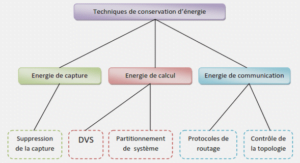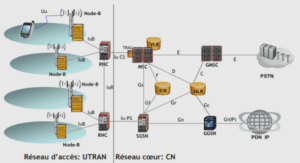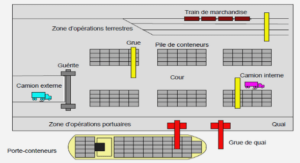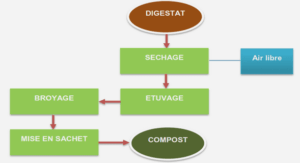Atmospheric icing happens when the surfaces of exposed structures are subjected to contact with super-cooled water drops or snow particles. Ice and wet-snow accumulation on exposed surfaces can seriously impair the operation and integrity of outdoor civilian, industrial or military structures, electric power lines, telecommunication networks, aircraft, transportation, antennae, and so forth, in cold climate countries subjected to extreme weather conditions [1]. Ice adhesion may lead to serious risks to the security of such systems as well as significant damage or financial losses in various sectors of the economy, as was the case during the 1998 and 2007 ice storms in Canada and the U.S.A (Fig.1.1) [1-6]. The ice storm of 1998 was the worst ever to hit Canada, based on the criteria of the amount of ice accumulation, the duration of the storm, and the population affected [7, 8]. Each year, numerous failures due to ice or snow accumulation are reported from Canada, the United States, Russia, Japan and elsewhere. In the specific case of power transmission lines, ice and wet snow can cause severe trouble due to their high adherence to both metallic and insulator surfaces resulting in cable sagging and short circuits due to static ice overloads on cables . Transmission lines are often subjected to wind-induced dynamic oscillations, the so called galloping. Aerodynamically unstable ice on power lines is an important factor in initiating the occurrence of galloping while decreasing the damping rate. In extreme cases it leads to high mechanical stress on conductors, insulating supports, cables and towers. The galloping finally leads to collapse of structures and reduces the life time of transmission lines. Meanwhile, when the accumulated ice suddenly drops off, extreme mechanical tensions are generated on a conductor resulting in increase of the possibility of no clearance between adjacent cables or cables and towers [9].
Flashover on ice-covered insulators is a complex phenomenon which causes damage to insulators and reduces their lifetime [4, 10-12]. The need for reliable transmission and distribution networks in severe icing conditions, thus, highlights the importance of ice adhesion studies. Therefore, a variety of de-icing and anti-icing techniques were developed over the last several decades [1, 7, 8, 13-15]. Different types of ice can be classified into three basic categories: hard rime, soft rime, and glaze [16-18]. Of most economical concern are glaze, hard rime and wet snow. Previous studies presented the possibility of distinguishing among them by temperature measurement [19]. Ice can be formed in dry or wet atmospheric conditions, accumulating on insulator surfaces from freezing rain, freezing drizzles, in-cloud icing, icing fog, wet snow or frost, and strongly adhering to any surface [3]. Prevention of ice accretion on surfaces requires reduction of adhesion strength between ice and subjected surface. Over the past decades, researchers have tried to improve on so-called de-icing methods such as thermal, mechanical and chemical methods to remove the ice/snow build-ups and are currently in use. Several research works are also underway to develop hydrophobic coatings with icephobic properties on outdoor surface structure [20-24].
On the other hand and in connection with the subject of the present study, which deals with reduction of ice accumulation on aluminum alloys (AAs) surfaces, it should be remembered that corrosion is always a serious issue when it comes to using metallic substrates outdoors. Aluminum alloys with a wide range of properties are used extensively in many industrial sectors due to their strength, ductility, formability, workability, etc. In view of the fact that all modern AAs use various types of metallic additives to improve their strength and properties, this inevitably leads to the increased susceptibility of such alloys to electrochemical corrosion. Accordingly, while developing durable anti-icing coatings on Al surfaces, their anticorrosive resistance should necessarily be kept in mind as an important issue regarding coating durability and stability.
Prevention of Ice Accumulation and Corrosion
Prevention of ice build-up and adhesion has long been a technological challenge. Ice, with its broad range from snow to glaze, can stick to everything. Hydrogen bonds, Van der Waals forces, and non-polar covalent bonds are the main contributors in adhesion of ice to a surface [25-28]. Currently, most de-icing techniques (so-called active de-icing, e.g. chemical, mechanical and thermal de-icing techniques) are applied extensively without fully preventing ice accumulation. Among these techniques one can cite freezing-point depressants for highways (salt, chemical sprays, etc.) [29] and de-icing fluids for aircraft (ethylene and propylene glycols) [30]. Although very efficient, the main disadvantage of the de-icing methods is that they must be used after ice build-up and thus during a period when damage can still occur on accumulated ice structures. The other disadvantages of de-icing methods are: frequency of application, significant negative environmental impacts (toxicity) and cost. Other methods, specifically applicable to transmission lines, such as mechanical vibration of cables, Joule heating of the conductors [29] and electrolysis [25], are effective but consume a considerable amount of energy and require surveillance of the lines and on-site intervention. Moreover, mechanical de icing can lead to surface damage resulting in the gradual degradation of the system itself. Various anti-icing fluids, e.g. ethylene glycol (EG) and propylene glycol (PG) are used to prevent ice build-up on aircraft, however, they need frequent application in large quantities [31] making their use both timeconsuming and expensive. Furthermore, such de-icers are often toxic and environmentally unsafe [32, 33]. None of the above-mentioned techniques prevents ice from creating or accumulating in the first place. Preventing ice accumulation or reducing considerably its adhesion force may be accomplished by producing anti-icing or icephobic coatings [34-37]. Recently, several coatings for such applications have been tested and reported [13]. Icephobic coatings must necessarily fulfill both of the following requirements: to provide a significant reduction in ice adhesion, and to ensure a reasonably long service-life (durability) [35]. Even though there is, as yet, no material which completely prevents ice or snow build-up on its surface [13], however, some coatings are believed to bring reduced adhesion or accumulation of ice. They are environmentally friendly compared to de-icing fluids and are cheaper than active methods which are energy consuming and expensive to operate [2]. Icephobic coatings, indeed, inhibit ice accumulation rather than eliminating it after its accretion. Superhydrophobic coatings with a small value of contact angle hysteresis showed a remarkable reduction of ice adhesion strength [38] and was developed and reported by the CIGELE research group using different techniques [21, 22, 39-42]. The delayed water freezing on superhydrophobic surfaces is also believed to reduce ice accumulation [39, 43]. To prepare the superhydrophobic coatings, however, there is a common two-step process: surface roughening followed by applying a low surface energy material. The rough structures created on the coating can be damaged and removed during icing/de-icing tests [23, 24, 38-40, 44, 45]. The coating durability is an important feature in the lifetime of a coating under extreme environmental conditions. Several studies reported on the fabrication of hydrophobic coatings via different methods, however, few investigated the durability of such coatings under simulated environmental conditions, e.g. ice-accumulation, UV degradation and rainwater. Therefore, in this research work, the prepared coatings are immersed in distilled and tap water as well for several hours in order to evaluate the durability of such coatings. The UV-degradation is, in fact, a critical aging process when coatings are exposed to atmospheric weathering conditions. Rainwater, with an average pH of 4-6, is another environmental parameter which needs to be simulated in outdoor conditions. Meanwhile, to compare the effect of acidic, basic and natural solutions, the prepared coatings were immersed in various pH solutions. Reduced ice accumulation on any metallic surfaces is always accompanied by corrosion which is a serious issue when it comes to outdoor use. Corrosion is defined by the breaking down of fundamental properties in a material due to chemical reactions with its surroundings. Typically, environmental parameters such as moisture and electrolytes are capable of penetrating through coatings to form an electrochemical galvanic cell with the anodic versus cathodic sites, resulting in the corrosion of the Al alloy [46]. Corrosion may be observed to concentrate locally in the form of pits or cracks on the surfaces. Different types of corrosion, more or less visible to the naked eye, can occur on Al, e.g. galvanic corrosion, uniform corrosion, pitting corrosion, trans granular and inter-granular corrosion, exfoliation corrosion, filiform corrosion and so forth each having its own characteristics and conditions [46, 47]. The use of hexavalent chromium for surface treatment of metals has a long history. Both for environmental reasons and worker safety concerns, however, the replacement of such coatings became a major priority and research activities increased to develop alternative non-toxic treatment processes. In addition to using cerium salts and zirconates, self-assembled monolayers often made from amphiphilic hydrocarbon molecules, can be used to protect Al surfaces against corrosion [26, 48]. However, the complex surface chemistry of a metal is certain to have significant effects on the coating process and properties of such resulting thin films [49]. Three categories of molecules are commonly used for self-assembled monolayers; these include fatty acids with carboxylic end groups forming electrostatic interactions with metal substrates, alkylthiols that link to the steel substrate through iron-sulfur bonding, and alkylsilanes that react with the metal oxide from the metal and metal alloy substrates [49]. For alkylsilanes, the metal alloy surface becomes much more hydrophobic due to film formation, while the corrosion resistance of the substrate was found to increase. The surface properties of metals are often affected by surface cleaning and the treatment protocols applied. Siloxane-anchored SAMs began attracting interest as surface modifiers since early 1980s [50]. Organofunctional silanes are hybrid organic-inorganic compounds which can be used as coupling agents across the organic-inorganic interface [48]. Bis-silanes can be used as an efficient corrosion inhibitor because of the presence of a long alkyl chain and cross-linking agents in their molecular structure [51, 52]. Alkanoic acid molecules such as stearic acid can be formed as a well-ordered self-assembled layer on different metallic substrates. As it was mentioned earlier, to date, the most successful coating used on Al is based on hexavalent chromium [53] which provides ideal alloy protection against pitting and filiform corrosion [54]. Such processes were also observed in vanadate- and/or cerium-oxide- based conversion coatings [55]. One alternative approach is to fabricate coatings by oxidizing Al with the permanganate anion, followed by Mn (IV) deposition [55]. The corrosion characteristics of the permanganate-based coatings are identical with those of the chromate-based system with the exception for alloys containing high levels of Cu or Zn, as in the aircraft alloys of AA2024 and AA7075.
|
Table des matières
CHAPTER I : INTRODUCTION
1.1 DEFINITION OF THE ICING AND CORROSION PROBLEMS
1.2 PREVENTION OF ICE ACCUMULATION AND CORROSION
1.3 ORIGINALITY OF THE PRESENT STUDY
1.4 OBJECTIVES AND AIMS OF THE THESIS
1.5 SIGNIFICANCE OF THE RESEARCH WORK
1.6 OUTLINE OF THE THESIS
CHAPTER II : BACKGROUND AND LITERATURE REVIEW
PART I: HYDROPHOBICITY AND ICEPHOBICITY
2.1 INTRODUCTION
2.2 ICING IN NATURE
2.3 ICE-REPELLENCY
2.4 MEASURMENTS OF ADHESION OF ICE
2.5 HOW TO REDUCE ICE ADHESION?
2.6 WETTING PROPERTY (SURFACE WETTABILITY)
2.6.1 SURFACE HYDROPHOBICITY
2.7 SURFACE PASSIVATION
2.8 COATING STABILITY AND DURABILITY
2.8.1 UV DEGRADATION
2.8.2 EFFECT OF pH
PART II: ALUMINUM ALLOYS AND CORROSION
2.9 CORROSION AND PASSIVATION OF ALUMINUM ALLOYS
2.9.1 A BRIEF INTRODUCTION TO ALUMINIUM
2.9.2 CLASSIFICATION OF ALUMINUM ALLOYS
2.9.3 ALUMINUM CORROSION AND PROTECTION SOLUTIONS
2.9.3.1 CHARACTERISTICS OF ALUMINUM ALLOY CORROSION
2.9.3.2 TYPES OF CORROSION ON ALUMINUM ALLOYS
2.9.3.3 CURRENT SOLUTIONS TO THE CORROSION PROBLEM
2.9.4 SILANE COUPLING AGENTS
2.9.4.1 APPLICATIONS OF SILANE COUPLING AGENTS
2.9.5 BIS-TRIETHOXYSILYLETHANE (BTSE)
2.9.6 SURFACE SUBSTRATE PRE-TREATMENT
CONCLUSION
![]() Télécharger le rapport complet
Télécharger le rapport complet






